- Joined
- 25 June 2009
- Messages
- 14,731
- Reaction score
- 6,069
Westland WG.25 (WR-05) "Mote"


Westland WR-06 “Wisp” (MoD project CONGA)
Westland WR-07 "Wideye" (MoD project SUPERVISOR)
Westland WR-08




Source: Westland and the Attack Helicopter – from Lynx to Apache, by Dr R V Smith, FRAeS; J P Graham, FRAeS (2020).
During 1968 the Future Project team began its assessment of an unmanned rotary wing battlefield observation system, a role assigned at that time to manned helicopters and the primary combat support role envisaged for the planned “Gazelle” AH.1. Austin’s Future Projects team had elected to consider how airborne battlefield surveillance might best be assured in a non-permissive anti-air environment: their conclusion was that small, semi-disposable, unmanned aircraft possessing an inherently low signature was the solution of choice.
The outcome was project WG.25, a 200 kg turbine powered co-axial rotorcraft having low optical and noise signatures. Later refinements would add low radar cross section by virtue of a smooth plan-symmetric shape and a novel control system having no preferred direction of flight such that the data link antenna could be pointed using yaw control.
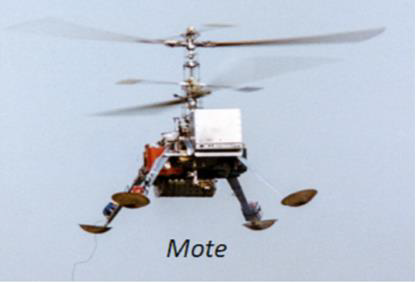
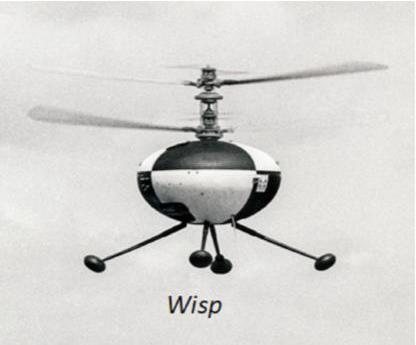
Westland WR-06 “Wisp” (MoD project CONGA)
Westland WR-07 "Wideye" (MoD project SUPERVISOR)
Westland WR-08
From around 1971, MoD sponsorship for studies of the concept of an unmanned rotary wing target acquisition system included contracts with WHL and Canadair covering airframe aspects. The Westland study was to derive a somewhat smaller air vehicle than envisaged by the WG.25 outcome as the required endurance and the likely mass of the electro-optic payload was further refined. Air vehicle stabilisation and navigation to and from the on-task area was to be fully automated. Following completion of this study activity a sub-scale model was built and flown to demonstrate the resulting novel control requirement.
Later, contracts were received for a demonstrator (WR-06 “Wisp”) and a full scale quasi-operational demonstrator (WR-07 “Wideye”) under the MoD project names of CONGA and SUPERVISOR respectively. Under cover of these programmes an extensive investigation of radar cross section and engine exhaust thermal signature management was launched. The plan-symmetric smooth external shapes were augmented using radar absorbent materials (RAM) manufactured as semi-structural items by Plessey (Towcester) and trials were executed in the UK Radar Cross Section (RCS) measurement facility (second and third image below).
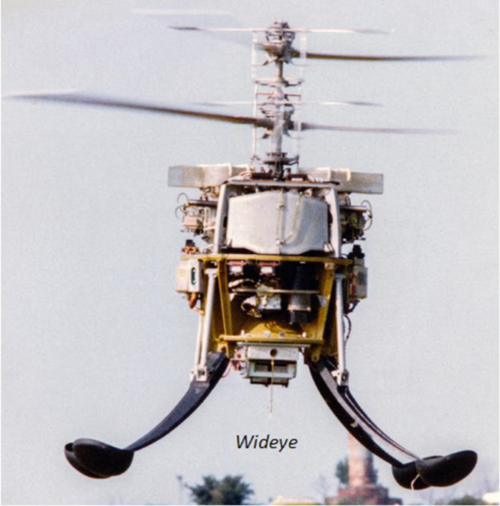
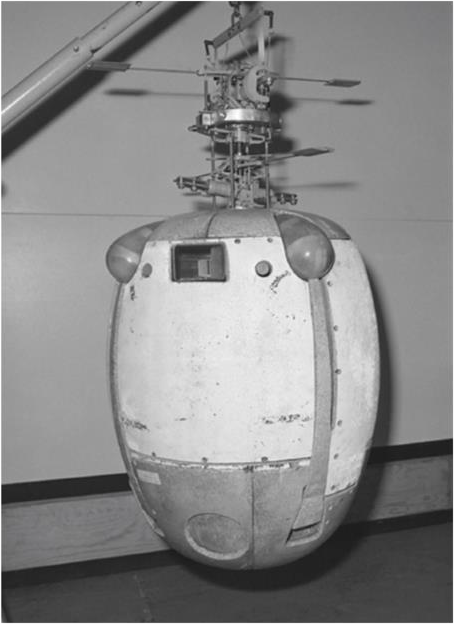
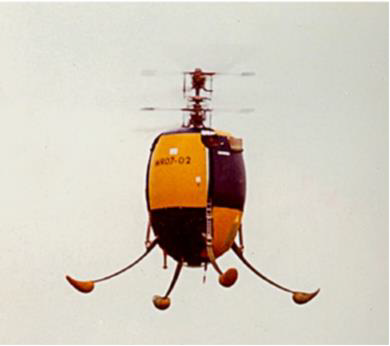
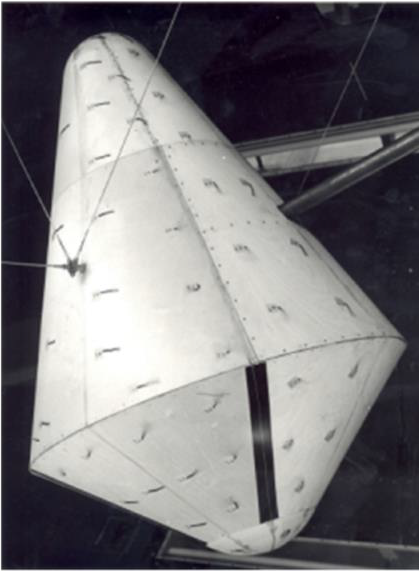
As a direct result, further investigations of the effects of airframe shape and rotor blade construction were undertaken and the WR-08 configuration with a conical plan-symmetric airframe was both wind tunnel and radar range tested with mixed success: radar cross section was markedly reduced without reliance on the use of RAM but unstable aerodynamic behaviour was witnessed in the Westland wind tunnel.
No ready solution could be found to the poor aerodynamic behaviour and so the planned production of SUPERVISOR system to meet GSR 3494 was to retain an air vehicle having a smooth barrel shaped fuselage with structural RAM skin panels and retractable undercarriage. Taken together these measures were determined to achieve a level of radar cross section judged by Royal Signals & Radar Establishment/Royal Armament Research & Development Establishment (RSRE/RARDE) as commensurate with appropriate levels of battlefield survivability.
Source: Westland and the Attack Helicopter – from Lynx to Apache, by Dr R V Smith, FRAeS; J P Graham, FRAeS (2020).
Last edited:


